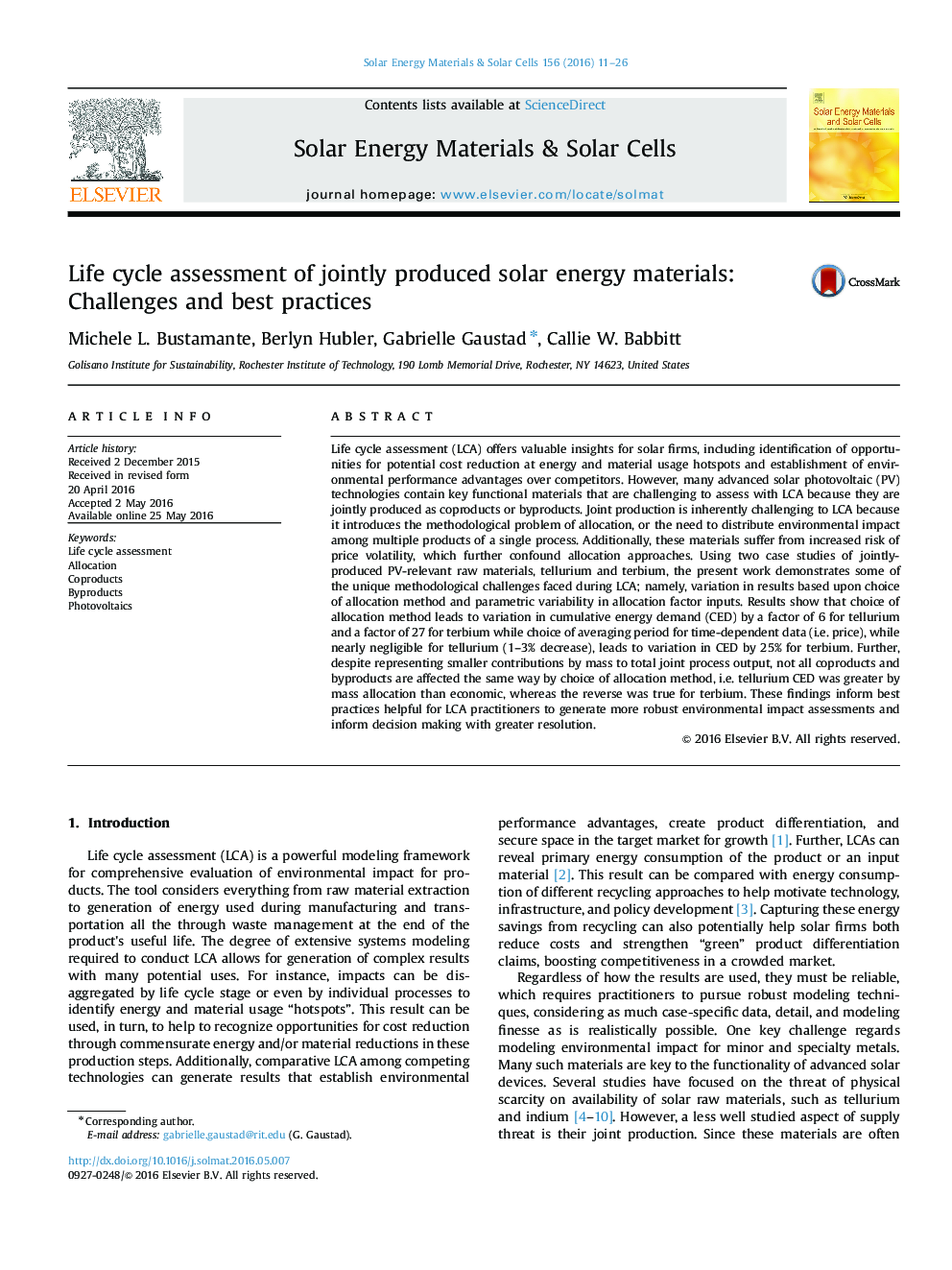| Article ID | Journal | Published Year | Pages | File Type |
|---|---|---|---|---|
| 6457650 | Solar Energy Materials and Solar Cells | 2016 | 16 Pages |
•Many PV materials are coproducts or byproducts of mining other materials.•Assessing their environmental impacts requires choosing an allocation approach.•LCA cases for 2 joint product materials, tellurium and terbium, are presented.•Results show up to a factor of 27 change in CED depending on allocation approach.•Recommendations are made to manage variability in joint product LCAs.
Life cycle assessment (LCA) offers valuable insights for solar firms, including identification of opportunities for potential cost reduction at energy and material usage hotspots and establishment of environmental performance advantages over competitors. However, many advanced solar photovoltaic (PV) technologies contain key functional materials that are challenging to assess with LCA because they are jointly produced as coproducts or byproducts. Joint production is inherently challenging to LCA because it introduces the methodological problem of allocation, or the need to distribute environmental impact among multiple products of a single process. Additionally, these materials suffer from increased risk of price volatility, which further confound allocation approaches. Using two case studies of jointly-produced PV-relevant raw materials, tellurium and terbium, the present work demonstrates some of the unique methodological challenges faced during LCA; namely, variation in results based upon choice of allocation method and parametric variability in allocation factor inputs. Results show that choice of allocation method leads to variation in cumulative energy demand (CED) by a factor of 6 for tellurium and a factor of 27 for terbium while choice of averaging period for time-dependent data (i.e. price), while nearly negligible for tellurium (1–3% decrease), leads to variation in CED by 25% for terbium. Further, despite representing smaller contributions by mass to total joint process output, not all coproducts and byproducts are affected the same way by choice of allocation method, i.e. tellurium CED was greater by mass allocation than economic, whereas the reverse was true for terbium. These findings inform best practices helpful for LCA practitioners to generate more robust environmental impact assessments and inform decision making with greater resolution.
